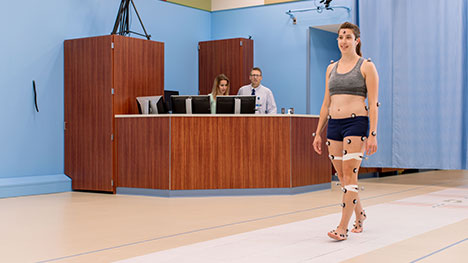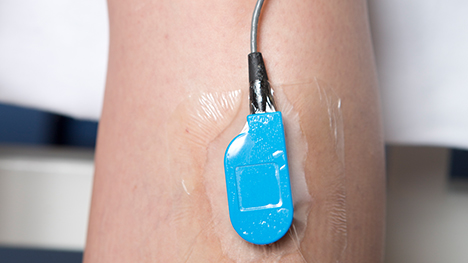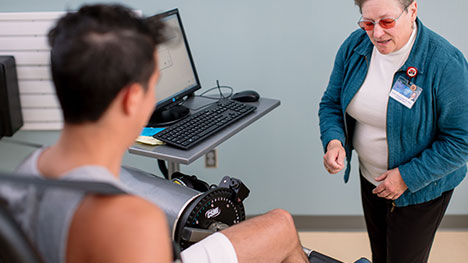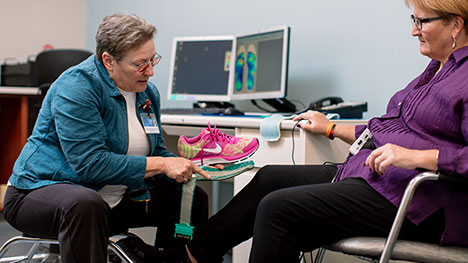Tests and procedures
The Motion Analysis Laboratory offers a team of specialists and specialized equipment to help with motion study evaluations in people with motion concerns. This equipment includes motion capture systems, surface and indwelling electromyography sensors, and multiple strength assessment modalities.
While most testing is done to study walking, our lab studies any kind of movement, including upper extremity motion.
A motion study may include any or all of these four elements:
1. How the body moves and forces that cause movement
Our lab has two motion capture systems and 10 force platforms to measure human movement in a variety of ground conditions.

A person with sensors walks in a room with specialized cameras to measure the movement of different parts of the body.

Round, reflective balls that are tracked by cameras are placed on specific points on the body. These balls create a computer model of the body that allows researchers to calculate how the body moves.
2. Muscle activity
Our lab uses surface and indwelling electromyography (EMG) to monitor when muscles are on or off during a movement.

An EMG sensor is taped over a muscle. The sensor records the electrical activity in the muscle to show when a muscle is working or not working.
3. Muscle strength
Our lab uses a variety of sensors to measure muscle strength.

A staff member explains to a patient how to complete a strength assessment. The patient pushes as hard as possible against a machine, and the machine records the maximum effort.
4. Pressure under the foot while walking
In-shoe pressure profiles are measured to ensure that orthotics and custom footwear are working optimally.

A staff member explains to a patient how a foot pressure sensor works. The thin, disposable sensor goes inside the shoe to give a pressure map while the patient walks in the lab. This map is used to guide creation of custom footwear or orthotics, often in people with diabetes.